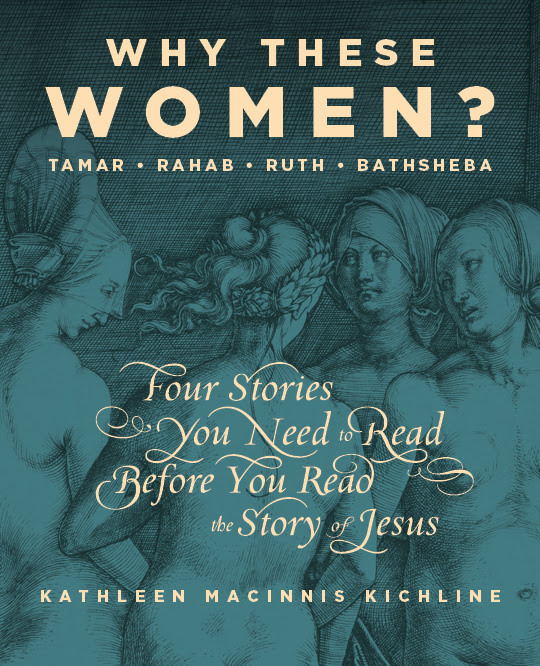Resurrection of the Body
By Robert Fontana
Happy, Holy Easter! Because of the resurrection of Jesus, we proclaim in the ancient Creed: “I believe…in the resurrection of the body, and life everlasting.” I was reflecting on this truth following the deaths of a number of friends whose remains were entered into the earth. I wondered, if earth could speak, what would Mother Earth say to the corpus of one being laid to rest with hope in the resurrection of the body. This is what came to me:

Mother Earth’s Letter to the Corpus of Friend
Dear Body of Friend, O holy corpus, O sacred bones and skin! Friend has been called home; you are still here. He has stepped into God’s time; you are left on earth time. I know you grieve your soul’s departure, the soul that animated your flesh and bones, that breathed air into your lungs, and sent life-giving blood through you heart. Be patient, O sacred corpus of Friend, in God’s good time, you will be united again.
In the meanwhile, you, O beautiful and grace-filled flesh and bones of dear Friend, you will be returned to the earth, to the soil from which you came. Earth comes from the stars and the galaxies, which in turn come from the Great Beginning when God unleashed the Spirit’s creative powers into the universe. Earth, like a tender mother, through powerful and mystical forces guided by the Spirit, gave birth to the great seas and land masses, to the creatures of the air, water, land, and those below the land, and finally, in the last age, to woman and man.
You, sweet body of Friend, holy relic, are being returned to the soil that gave you birth. Do not be afraid. I will hold you until that great day when the dead shall rise, and you have been fully reunited with Friend in the transfiguration of the dead. Until then, be at peace.
Good Friday Reflection: Jesus’ death means more than opening the doors to heaven.
By Robert Fontana

Jesus is not content to have his followers remain in the upper room, in Greek, “Cenacle.” The Cenacle is that warm place of close friendships, Eucharist, foot-washing, and drawing near to the Father’s love in the Son and through the Holy Spirit. The entire purpose of the Cenacle experience is to prepare its participants to leave its safety and security and enter the graced and broken world to be a power for good. It is into the “world” that God so loves that he sent his only Son, not to condemn it, but to save it. John 3:16
The “world” does not mean secular society and culture as opposed to life in the Church with its focus on faith and religious practice. “The world” in Scripture refers to the collective power of sin that shows itself in selfishness, self-centeredness, and violence; the abuse of human rights, break up of families, and the denial of dignity to so many: the unborn, migrants, the elderly, the imprisoned, the disabled, the ill in body and mind.
Jesus leads us out of the Cenacle into the world, a journey that always leads to the cross:
So they took Jesus; and carrying the cross by himself, he went out to what is called The Place of the Skull, which in Hebrew is called Golgotha. There they crucified him, and with him two others, one on either side, with Jesus between them…
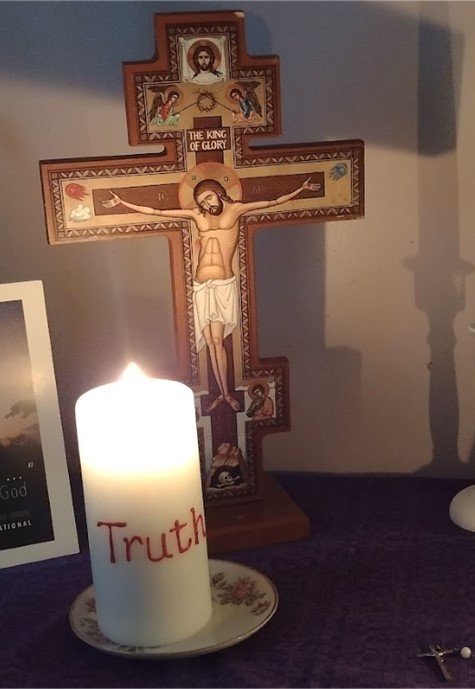
A few women from the Cenacle, including Jesus’ mother, and the “Beloved Disciple,” remained with him at the cross. They remained because of love, because they knew that Jesus, who was condemned as a criminal, was just the opposite. But they did not understand, could not understand until after the resurrection, the full meaning of this death: it was a life-giving death, a world-saving death for every human being that had ever lived and would ever live, and for creation itself. For Jesus’ death reconciled the world to God and paved the way to eternal life:
…now Christ has been raised from the dead, the first fruits of those who have fallen asleep. For since death came through a human being, the resurrection of the dead came also through a human being. For just as in Adam all die, so too in Christ shall all be brought to life, but each one in proper order: Christ the first fruits; then, at his coming, those who belong to Christ… (1 Cor 15:20-23)
But Jesus’ death means more than simply opening the doors to heaven. Jesus leads his followers to the cross because in his dying Jesus embraces suffering humanity and invites his followers to do the same. Some of his followers could not bear to be with Jesus in his suffering, and they fled. But others who were more stout-hearted, mostly women including his mother, stood with him in painful solidarity:
Meanwhile, standing near the cross of Jesus were his mother, and his mother’s sister, Mary the wife of Clopas, and Mary Magdalene. When Jesus saw his mother and the disciple whom he loved standing beside her, he said to his mother, “Woman, here is your son.” Then he said to the disciple, “Here is your mother.” And from that hour the disciple took her into his own home…
Good Friday reminds us that we too can stand with the suffering Jesus today, not merely liturgically but personally, by risking to step into the lives of suffering people and assist them in bearing the burden of their suffering. Clearly that is the meaning of Simon of Cyrene who helped Jesus carry his cross. Can we help children, the sick, the mentally ill, the immigrant and refugee, the unemployed and underemployed, the elderly and lonely, know the love of God through sharing our care and compassion?

Fr. Thomas Judge, the founder of the Missionary Cenacle Family to which Lori and I belong, understood this as well. He insisted that the abandoned Christ on the cross, “the naked, crucified Jesus on Calvary,” is the Christ of the Cenacle (Meditations, p. 327); and Christ crucified can only be truly loved and comforted by loving and comforting the poor and spiritually abandoned in the world, those individuals and groups of people who do not know God’s love or the love of their neighbor. The Cenacle that stands at the cross in solidarity with the suffering Jesus is the Cenacle that stands in solidarity with suffering humanity.
On Good Friday we are reminded of the salvific death of Jesus, a death that bore the sins of the world and opened for all of humanity and creation itself, life everlasting. With this truth is a corresponding truth: we disciples of Jesus most effectively remember Jesus’ death by our personal solidarity and service to the suffering people we meet within the providence of our everyday lives.
Holy Spirit inspired “books” for Lent:The Bible and National Geographic
By Robert Fontana
For all of you observing Lent, reading and praying through the Bible is a no-brainer. I can see your raised eyebrows with my suggestion that you also read the National Geographic magazine. First let me comment on reading and praying the Bible.

When I was in graduate school, a professor posed this question to the class: Is the Bible prescriptive for the life of believers today or descriptive of life of believers of the past? What do you say to that question?
Biblical fundamentalists lean towards the “prescription” side of the question, believing that the Bible prescribes in specifics how we must live today. We dare not veer from its direction less we incur the wrath of God. Of course, there are real problems with this view. The Hebrew and Christian Bibles support slavery, a non-scientific view of the origins of the known universe, strict male dominance in the family and church, and religious domination of the nation. Christian nationalism is an outgrowth of this view of the Bible.
There are also real problems with saying that the Bible is only “descriptive” of how the people in biblical times lived and does not have serious guidelines for us today. Radical proponents of this view reject anything unique in the Bible. For them, Jesus is another figure in history like Moses, Buddha, and Mohammed. The goal of the spiritual life is self-actualization. “Sin” consists fundamentally of the social structures that sustain racism, consumerism, and power.
As so often happens in the spiritual life, the truth lies in a “both/and” approach to the issue. There are teachings and insights in the Bible that we need to insist are prescriptive for us today, e.g. belief in Jesus as the Beloved Son of God, and the ethical standards of the 10 Commandments and the Beatitudes. But clearly, not everything is prescriptive. We are not going to blame all mental health problems and disease on the devil and depend solely on praying with greater faith for healing.
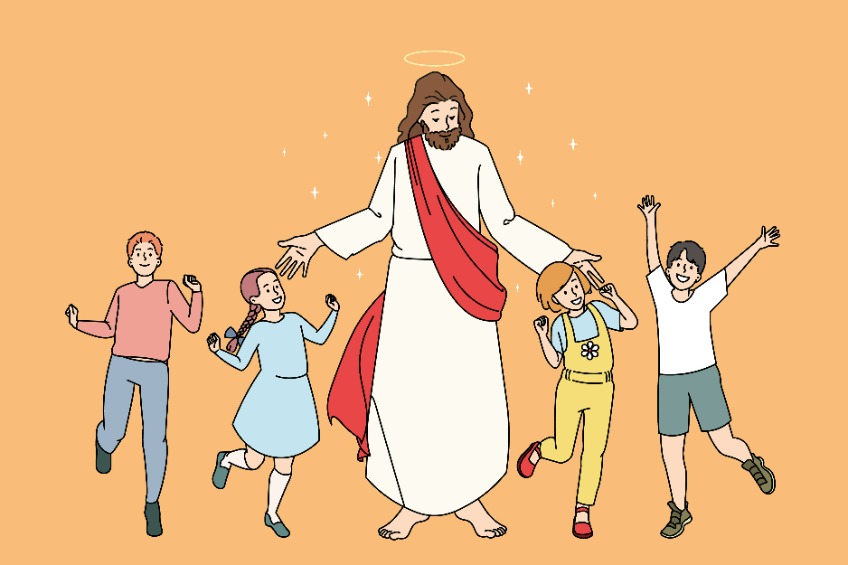
When you read and pray the Bible this Lent, remember this: before there was ever one written word of the Bible, there was a community of faith, the Hebrew people from the time of Abraham to Jesus, and, after the Resurrection, a Jewish-Christian people. Until the time of King David, the Hebrews lived their lives of faith without any written “Word of God.” Furthermore, the Hebrew Bible as we know it did not reach its full form until the time of Jesus. Without a written “Word of God,” how did they pass on the revelations they had received from God? The answer lies in the living faith of the people – their music, stories, laws, rituals, and symbols.
The same is true for the early followers of Jesus. There was no written New Testament as we know it until the end of the fourth century. How did the early Christians pass on and interpret the revelation of Jesus without a written Bible? Again, – through storytelling, music, laws, rituals, and symbols.
Clearly the “Word of God” is not fully contained in a book, the Bible. For Christians the “Word of God” is the Risen Jesus who is present to His people in the written word which gives testimony to how the first followers of Jesus understood who he is and how they were to live as his disciples. Jesus is also present in the lives of holy men and women in history who teach how to follow Jesus in their particular time and place. And we know the presence of Jesus through the lived experience of God’s people today. Each generation of believers gets to pray through the Scriptures and discern what the risen Jesus is saying through his word in Scripture, through his word in Church history, and through his word to the living Church today.
We take the Scriptures seriously but not literally. According to the Catechism of the Catholic Church, “we must acknowledge that the books of Scripture, firmly, faithfully, and without error teach that truth which God, for the sake of our salvation, wished to see confided to the Sacred Scriptures.” (Art. 107) We discern with the Church, the community of faith, what is descriptive of the life of believers from the past and is not binding for us today, and what is still prescriptive from the past and must be adhered to. An example of the first (descriptive) is the biblical acceptance of slavery. A prescriptive biblical passage is Jesus’ teaching:
“But to you who hear I say, love your enemies, do good to those who hate you, bless those who curse you, pray for those who mistreat you…Do to others as you would have them do to you. For if you love those who love you, what credit is that to you? Even sinners love those who love them.” (Luke 6:27-28, 31-32)
The Bible is not a science book. It does teach that God created the world, and we build on that with the scientific evidence gathered over centuries, from dinosaur bones to pulsars.
The Bible teaches that created things can manifest the presence of God. St. Paul makes this clear in his letter to the Christians in Rome: “Ever since the creation of the world, his invisible attributes of eternal power and divinity have been able to be understood and perceived in what he has made.”
(Romans 1:20) Many sources illuminate and illustrate the unfolding of God’s creative power in the vastness of the universe and in our tiny universe of planet Earth.
National Geographic helps me to better understand God’s creative power, active in the world. I am humbled and amazed with every issue as its writers and photographers reveal the beauty, complexity, and even fragility of the Earth, God’s creation, which we share with flora and fauna great and small.

For example, in a recent NG magazine on whales, the writer tells the story of a researcher who observed a baby beluga whale through the glass of an aquarium tank. As the two stared at one another, the researcher, smoking a cigarette, blew a cloud of smoke towards the baby Beluga. The baby swam off, returning a few seconds later with its mother who proceeded to release her mother’s milk, creating a cloudlike display which resembled the puff of cigarette smoke. WOW!! What is going on here? A Beluga watching a human. A baby whale communicating with its mother. Mother whale mimicking the human. I’m in awe.
The Holy Spirit inspires the Bible, but we must discern what in the Bible is “prescriptive,” as we prayerfully distinguish what we hold on to for our lives today.
The Holy Spirit is the creative power that brings forth life on our planet. Through different sources, such as scientific journals, we can learn more about the Spirit’s creative power and how to cooperate with it so that life continues on our planet.
Along with the Bible, National Geographic can be great spiritual reading for Lent.
The Lenten Journey, when Jesus comforts the afflicted and afflicts the comfortable
By Robert Fontana
Lent is fast approaching. And in Providential irony, Ash Wednesday is also St. Valentine’s Day (February 14). How about that for a divine challenge! Ash Wednesday invites us to fast, pray, and give alms. St. Valentine’s Day invites us to splurge on dinner, show love to those we love, and give flowers and lots of chocolate. And it follows that other day of great splurging – Fat Tuesday aka Mardi Gras. The last big “let the good times roll” before the disciplines of Lent take hold (with exceptions, of course, for St. Patrick and St. Joseph feast days).

However you resolve the dilemma of Ash Wednesday’s coinciding with St. Valentine’s Day, prepare yourself now for the spiritual journey you want to take during the great 40 days of Lent. On this retreat we followers of Jesus are invited to encounter the Lord with all the honesty and authenticity that we can muster. If we do this, if we sincerely prepare ourselves to encounter Jesus anew, it can be a wild and crazy ride because Jesus does not fit neatly into our liberal – conservative categories.
We don’t get the Jesus we want. We get the Jesus we need.
Keep in mind, the Jesus who said,
“Come to me all you who are weary, and I will give you rest,” (Mt 11:28)
is the same Jesus who said,
“Do not think that I have come to bring peace upon the earth. I have come to bring not peace but the sword. For I have come to set a man ‘against his father, a daughter against her mother, and a daughter-in-law against her mother-in-law; and one’s enemies will be those of his household.’” (Mt 10:34)
At first glance it might seem Jesus is being schizophrenic, a Dr. Jekyll and Mr. Hyde. However, most parents, teachers and anyone who cares for children and youth know that we must do this delicate balancing act of “comforting and afflicting (or challenging) our children all the time.
For example, your son, trying to impress a girl with his driving skills, backs into a car. The other car has very little damage but the rear of your car is crushed. Your son, with tears in his eyes, comes to tell you what happened. You, of course, are glad that no one was hurt and feel bad for your son who clearly shows remorse. You hold him in your arms, tell him you love him, remind him that cars can be fixed and that you are glad he is alright. He feels consoled, cared for, and comforted. The “afflicted is comforted.” He is reminded that he is absolutely loved no matter what!
But wait, that’s not the end of it. You look your son in the eyes and say, “Of course, you will have to pay for the repair out of your work money.”
He looks at you with horror in his eyes. Six months later, after making his last payment to you for the repair of the rear hatchback, he says, “I sure hate making money at my job and handing it directly to you.”
The “comfortable” has been “afflicted.” He needed to be held accountable for his behavior and accept the appropriate consequences so that he could mature and grow into a wise, thoughtful, and healthy contributor to society.
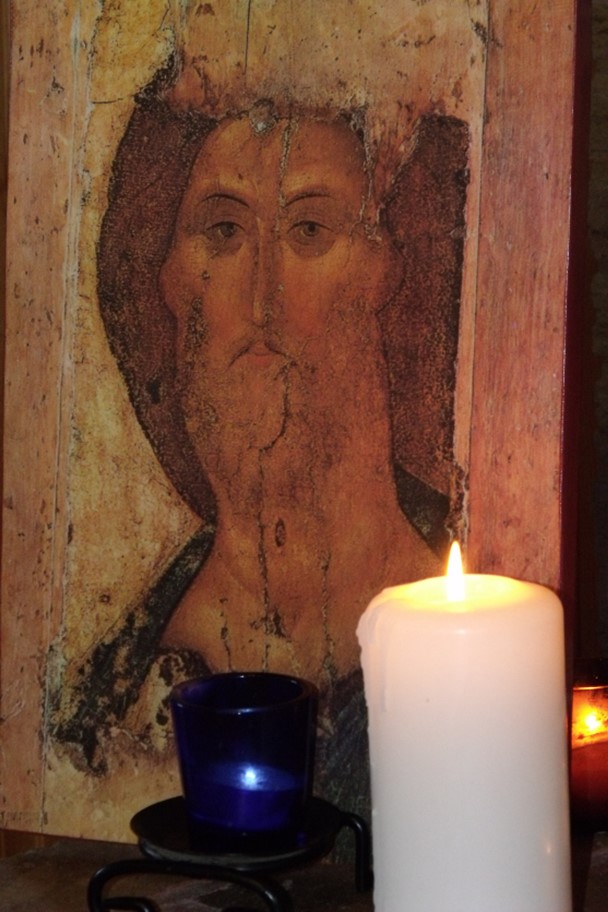
Something similar happens when we encounter Jesus in an honest authentic way. We do not simply get the Jesus we want, the One who consoles and comforts us, we get the Jesus we need, who wants us to learn from our mistakes, hurt, conflict. For example:
Charlie goes to see Fr. John because he is having marital problems. Fr. John greets him with great compassion, listens to his pain, and offers him a safe place to unload. The “afflicted” has been “comforted.“
Fr. John, being a wise spiritual director, also invites Charlie to examine his role in the conflict. Charlie admits that he’s been under a lot of pressure at work, has been drinking too much at home, and that his wife complains of being hurt and neglected. Now Fr. John gets to ask Charlie, who’s an active Catholic, “Are you the person you want to be in this marriage? Are you being the husband and father that you want to be in Christ?” The comforter has now become the afflicter (in a loving and kind way).
Charlie thinks about it. “No, I’m not being the person I want to be.”
“Well, who is that person you want to be in this marriage and family? And what are you doing that’s getting in the way of your being the husband and father you want to be and can be?
There’s silence. Fr. John lets it sit there for a while then says, “Tell me about your relationship with alcohol.” And for the first time in his life Charlie admits that he can’t manage his drinking. It’s out of control.
If Fr. John had offered only comfort, it would have allowed Charlie to hide behind Fr. John’s kindness and care. He would not have been challenged to mature, to grow up and take responsibility for his part in the conflict at home nor to make a realistic assessment of his drinking habits. This is not uncommon. Many active Catholics, Protestants, and Evangelicals use religious practices and friends to hide from the difficult and complex issues that keep them from maturing into healthy adults. They turn to Jesus for comfort but do not stick around for the “affliction/challenge” that they need to grow and mature in faith.
The beautiful thing is that when Jesus does “afflict” us, he walks with us every step of the way as we take a hard look at ourselves, address the issues within that are keeping us from growing in faith, and find the courage to mature.
Whatever your Lenten plan is, draw close to Jesus, receiving both his comfort and his “affliction.” In your prayer, at worship, with a spiritual companion or director, bring your struggles, your questions, your fears to Jesus. Allow Jesus to bless you with tender love and guide you along a path of life in the Trinity.
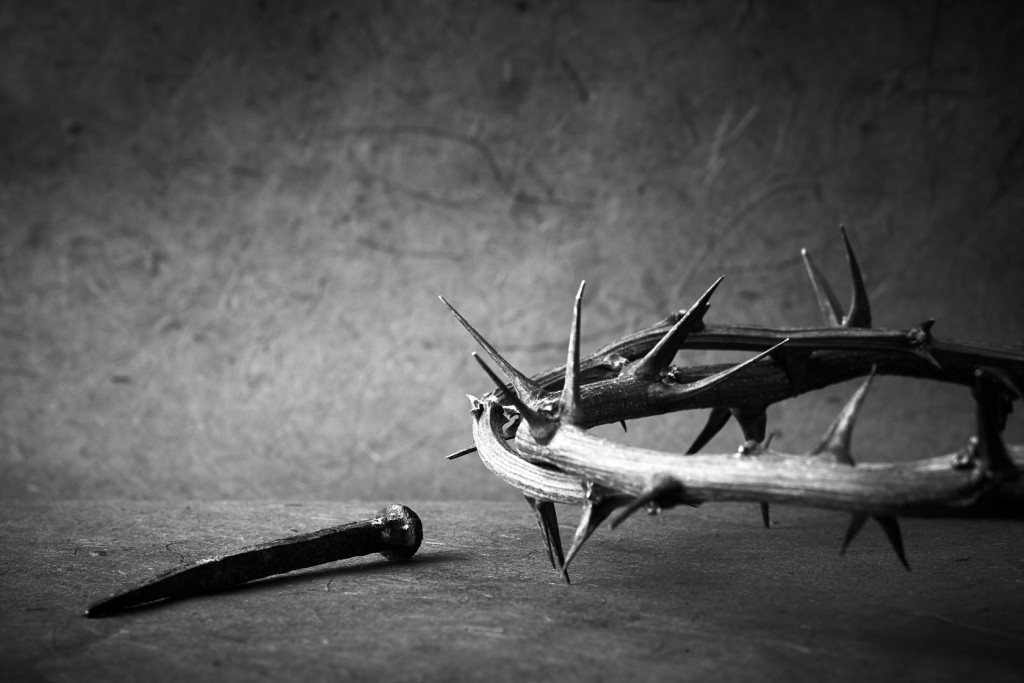
Fun, Spring Cleaning, and St. Brigid’s Day
By Robert Fontana
(reprint from 1/31/2016)

Faith can be fun for kids and adults alike. In fact, if it is not fun some of the time, even for us older folks, faith will lose its power to touch our imaginations and enrich our lives. One way to keep faith fun in the home is to select a few of your favorite saints – perhaps those saints with whom your children share a name or with whom your family has a cultural connection – and plan to celebrate their feast days in your home with good food, a children’s version of the saint’s story, and some sort of prayer ritual.
We Fontanas like to observe the Feasts of St. Joseph (March 19) who is the patron saint of Italy, St. Clare (August 11) and St. Francis (Oct 5), and of course, our Irish patrons (Lori’s side of the family) saints Patrick (March 17) and Brigid (Feb 1).
St. Brigid’s feast day is Thursday, February 1, which, in Ireland, also marks the first day of Spring. So on St. Brigid’s Day we are going to gather with family for some good Irish stew and some good Irish faith-fun, including the following prayer service:
Begin with this Prayer to St. Brigid
Saint Brigid, daughter of Ireland and lover of Jesus, draw us by your prayers into the living flame of God’s love. Help us to clean our hearts and homes of all that is selfish and sinful. Pray that we will be attentive to the poor and spiritually abandoned, that we will practice the Beatitudes in good times and bad, and that the warmth of God’s love will animate all that we say and do.
Each member of the home then takes a bandanna, handkerchief, or even a cloth napkin in hand and walks through the house, dusting the furniture, TV, books, and lamps, etc. singing “Alleluia, alleluia, alleluia.”
When the house has been thoroughly dusted, all go outside and tie the cloths on the branches of a shrub or tree (or porch railing). Then together, pray this prayer:
All: St. Brigid, come this day to our home and hearts; come by the power of God and be our guest. And help us, dear Brigid, to wipe away the dust of too much “me, and my, and mine” that we might love others with a selfless heart. We pray this in the name of Jesus. Amen.
Our Father…
Return to the house for dessert (Irish mint ice cream!)

Countdown to Epiphany, this prayer can help
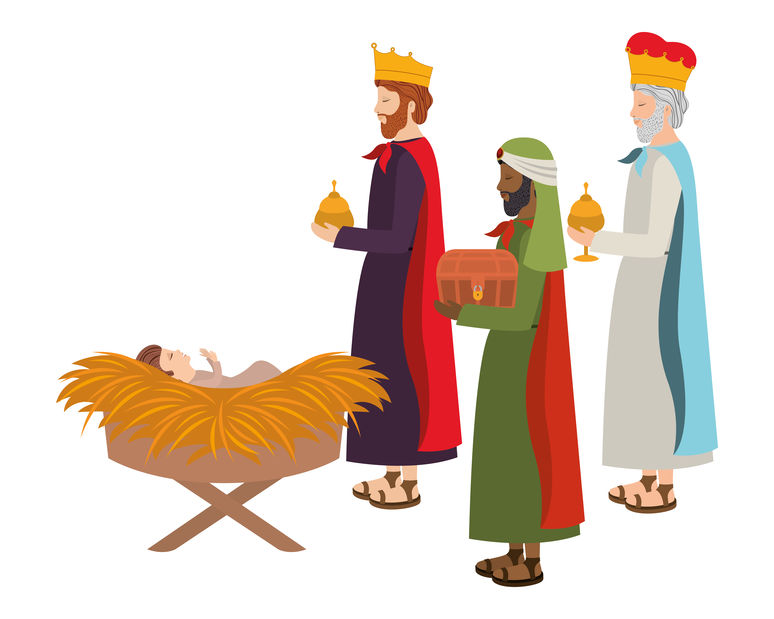
Many Catholics and other Christians do not celebrate the great feast of Epiphany which commemorates when the “Magi from the East” visited Bethlehem and the Christ child. They follow the secular trend of ending the Christmas celebration on Christmas Day or shortly thereafter. They might sing the popular Christmas carol, The Twelve Days of Christmas, but they do not understand its meaning. The title of the song refers to the 12 days between Christmas and Epiphany. Here’s what Wikipedia writes about this time period:
In many Western ecclesiastical traditions, Christmas Day is considered the “First Day of Christmas” and the Twelve Days are 25 December – 5 January, inclusive, making Twelfth Night on 5 January, which is Epiphany Eve. In some customs, the Twelve Days of Christmas are counted from sundown on the evening of 25 December until the morning of 6 January, meaning that the Twelfth Night falls on the evening 5 January and the Twelfth Day falls on 6 January.
We have a special family gathering on the Feast of Epiphany. It’s when we exchange gifts with one another, have a great meal together, make crowns of the Three Kings for all to wear, play games and sing carols. And to help us countdown from Christmas to Epiphany we have this prayer ritual at dinner for the Twelve Days of Christmas:
- Light three candles representing the gifts of gold, frankincense, and myrrh. Pray the following prayer together:
- To Bethlehem we travel with the Magi from the East, across the days of Christmas to the Epiphany Feast. Give us the courage of the Magi as we begin our search for you. Give us the eyes of the Magi that we might see the star that leads us too. And when we get to Bethlehem on that Holy Epiphany Day, give us the heart of the Magi that humbles us to pray.
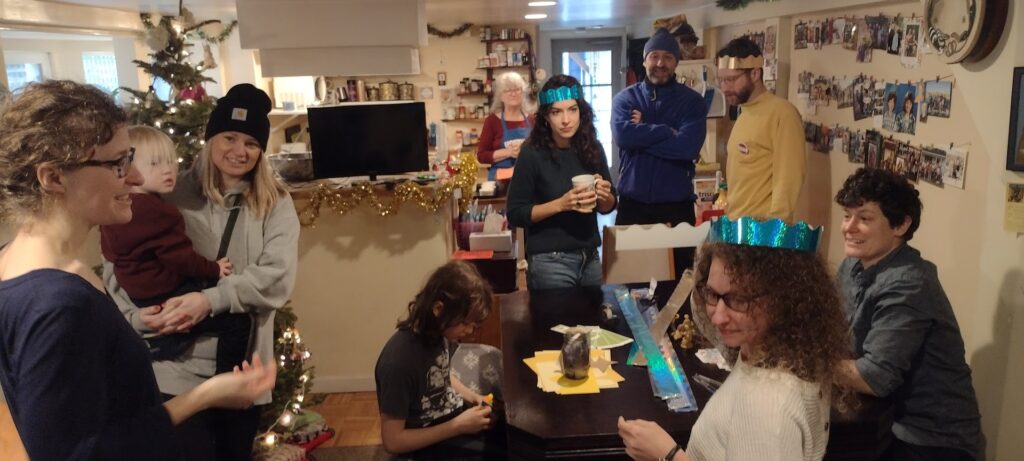
Plan a fun gathering for your family and friends for Epiphany on January 6, 2024. Happy Christmas – Epiphany season!
A love note to a Christmas tree
By Robert Fontana

I love you, O beautiful tree of Christmas. You enrich my life and the lives of all who gaze upon you in wonder and delight.
Your coming was awaited with childlike anticipation. And when you arrived, the busyness of the house stopped so all could welcome you. Treats were shared and wine was poured as you took your place in the corner of the family room, an honored guest.
You are lovely in your simplicity. Still, we dressed you with a string of lights that glow like fireflies in the night. Then your magic began, for it seems you are some sort of mystical portal to the past. I can see my father toasting his sons with a glass of Mogan and David and my mother, cigarette dangling from her mouth, laying tinsel strand by strand on the Christmas tree of my childhood.
Other memories emerge as we grace your branches with ornaments, some homemade, some gifted, some in honor of the holy event we commemorate, and some as playful as a toy plane, a doll, or an elf from Santa’s workshop. With each adornment, stories are shared. With each sharing, new images from the past flow around us: cousin Wade running in from the outside delirious with joy; my brothers in their red Boys Choir blazers preparing for midnight Mass; and friends gathered around the piano to sing “Sister Mary Had a-But One Child” to Mom’s accompaniment.
O Christmas Tree, I see in you all the Christmas trees of my past, from the great pine my brother John and I cut down and dragged into the family living room, to the silver one that shone brightly at Grandma’s house, to the very first tree of our marriage, a “tree” that Lori and I created from cast-off boughs collected at the Christmas tree lot because we could not afford even the $10 for the smallest tree.
We have gathered our children around you, and now our grandchildren, all in memory of the God of love who sent us Jesus to teach us how to love. You, O Christmas Tree, have been a sacrament of this season, a source of beauty and unity of past and present. And like the Christ-child who will give his life for all of creation, you give your life so that we may celebrate these days in the grace of your presence.
I do love you, O Christmas Tree, and I thank you!

Homespun Homily by Lori: The Chaplet of Divine Friendship
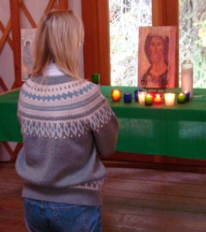
During the months of lockdown in the pandemic, one benefit we enjoyed was that Robert and I grew in our appreciation of the Chaplet form of prayer. We prayed the Divine Mercy Chaplet with family members and friends over Zoom. Soon we discovered the sung version of this chaplet, which I especially enjoy praying and singing through.
Eventually, Robert developed our own simpler form of the chaplet type of prayer, calling it the Chaplet of Divine Friendship. The format is very similar to other chaplets, with an introductory prayer, the antiphon chanted before each of the five “decades,” and the ten repetitive short prayers, prayed in the call and response pattern.
The chaplet prayer has much in common with the rosary. Its repetition allows for calm reflection. It doesn’t require a lot of thinking but rather touches the heart and the spirit. This is one reason why I appreciate this form of prayer so much – when I pray / sing the chaplet, my worries are pushed to the side. My anxious thoughts are drowned out by the simple declarations of faith in the chaplet’s prayers. Praying the chaplet helps me in my everyday life. It is a form of contemplative prayer.

I pray it when I’m driving – I can hum the prayer and still pay close attention to the crazy Seattle traffic. I pray it when I’m waiting – in grocery check-out lines or at a grandchild’s soccer practice. I pray it when I’m walking to the post office or library, when I’m worrying about a problem as I wash the dishes or clean the bathroom, when I awake in the night and can’t sleep. Increasingly, I’ve been intentional about turning to this simple prayer because I KNOW it’s so much better, so much more productive than complaining or ruminating or drowning in “what if’s.”
We hope that you will take a look at the Chaplet of Divine Friendship which we’ve recorded at this YouTube link: https://youtu.be/xX_idGXc-20
Try it for Advent. Use your rosary to help you keep count of the chaplet decades. May it be a help to you, a calming, encouraging reminder of the great love of Jesus for YOU.
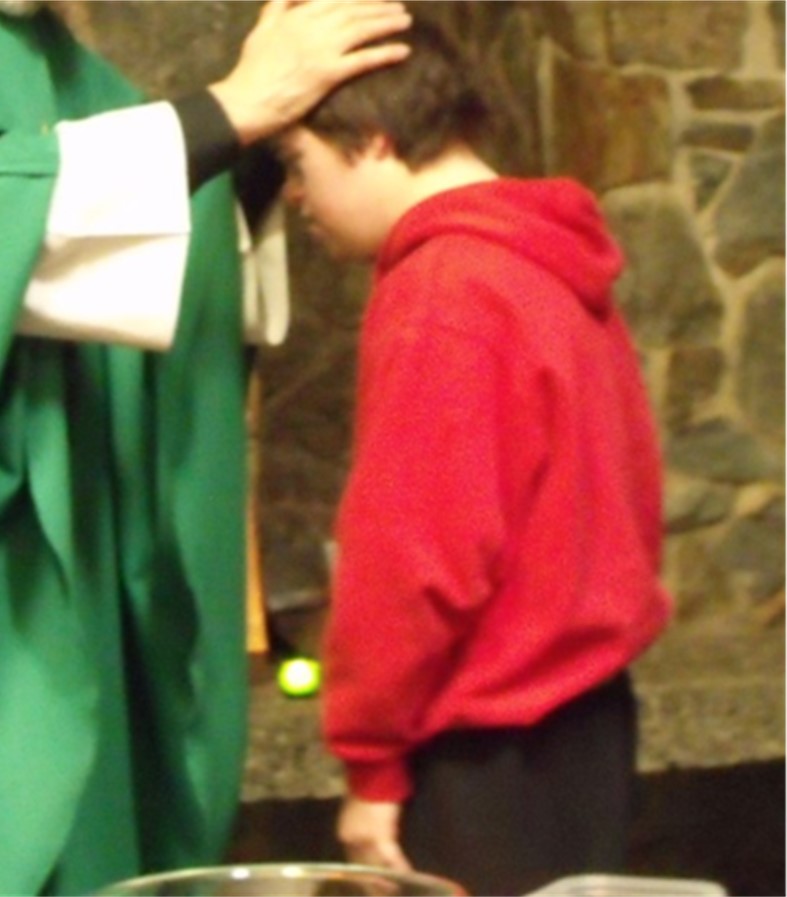
An Advent Spiritual Practice: The Chaplet of Divine Friendship_________________________________________
Opening Prayer – In the name of the Father…Abba Father, Lord of heaven and earth, you created woman and man in your image and likeness and planted them in the garden of earth to love one another and to care for the flora and fauna of the earth. You did not leave them alone but walked alongside them as you walked alongside our biblical ancestors Abraham and Sarah, Isaac and Rebekah, and Jacob and Rachel. And in the fullness of time, you sent your beloved Son Jesus, to be not merely our Lord and Savior, but our friend. Jesus said, “I have called you friends, for everything that I learned from my Father I have made known to you.” (John 15:15) (5 decades)
All– Abba Father, so loved the world, he gave His only Son, not to condemn the world but to save everyone, to save everyone.
Leader – Jesus our brother, kind and good (10 x’s)
All – I trust in you, I trust in you.
After the 5th decade:
Closing Prayer: Abba Father, Lord of heaven and earth, thank you for giving us Jesus as our friend and brother. Help us to return His friendship by being attentive to the Holy Spirit’s working in our lives and in the world and having the courage to follow the Spirit’s prompting always. In the name of the Father…
A Reflection on Women in the Church (guest writer)
Lorene Davidson was asked by our pastor to give a reflection on Women in the Church in place of his homily on the Feast Day of ST. Phoebe, deaconess and companion of St. Paul (Romans 16:1). She has given us permission to reprint it here.

When Fr. Oliver asked me to offer this reflection, I had just heard Maria Laughlin from St. James Cathedral share her experience of the synod gatherings in our archdiocese. It filled me with hope for the future of our church. People of all ages and backgrounds came together to listen to each other intentionally and share from their hearts what they envision for the future of our church. She said that the Holy Spirit’s presence was evident.
When the results of the first phase of the global synod were published, I felt uplifted and energized. People from all around the world believe that there is an urgent and critical need to rethink women’s participation in the church. The number of priests is dwindling. We need more vocations to the priesthood, but we also need laypeople to step forward to help – both laywomen and laymen. Religious women and men are also a great resource.
There are nuns all over the world carrying out leadership roles, but they often lack official recognition or support. There are women in the Amazon acting as deacons with the blessings of their bishops. Because there are so few priests, some remote communities do not see a priest for six months to a year. These women are baptizing, officiating at marriages, and ministering to the spiritual and physical needs of the communities. And yet, these women cannot be ordained as deacons.
Where is St. Phoebe in all this? St. Phoebe was a deacon and benefactor of the church in Greece. She, along with other women and men, spread the gospel across Asian Minor and east to the Roman Empire. St. Paul himself commended her to the Christian community in Rome, asking them to receive her in the Lord and treat her in the manner of the holy ones. Paul said that she was a benefactor to many including himself. (Romans 16:1-2). Think of the courage it took for a woman to travel 700 miles to a country and community she did not know. Imagine that strength of her faith. She is a reminder that there is historical precedent for women deacons in the Catholic Church.
I have seen so many changes in our church during my lifetime. When I was a child, we did not have “Altar Servers,” we had “Altar Boys.” There were no lectors or Eucharistic ministers. The priest did it all. Of course, most parishes had two, three or more priests to divide the labor. Our priests need our support. And many of them would welcome it.
My mother is often on my mind when I am a server, lector, or Eucharistic minister. She and many of the women in her generation would have welcomed the opportunity to serve in the way women can now serve. I am so thankful that I can participate more fully in the life of our church. The last few years I have been serving at daily Mass with a team of eight other women and men. As a server I feel even more connected to the liturgy and the Eucharist. As a Eucharistic minister I feel a special bond to each communicant. I am in awe of offering them the body of Christ. As a lector, the connection to the word of God, studying it, reflecting on it offers new insights into God’s message.
And His message can change in different circumstances. For example, Mark 16:18 says, “they will pick up snakes with their hands, and if they drink poison, it will not harm them.” I could not relate to this until I went to healing ministry with two women from our parish. They gave me several Bible verses to meditate on while I was in treatment for cancer. It was like the Holy Spirit turned a light on in my head. These words were spoken 2000 years ago, before there was chemotherapy, and yet they are a perfect description. It brought me peace and calm. It gave me hope.
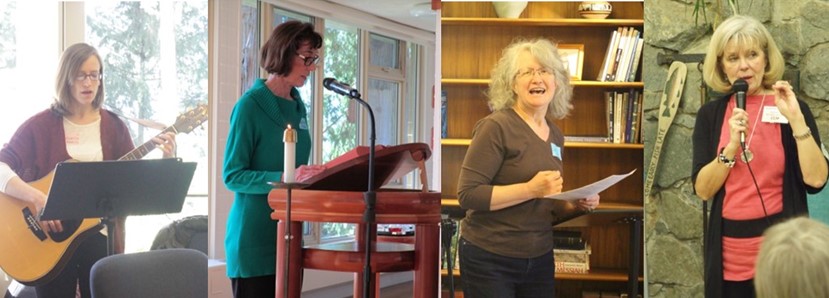
This healing ministry is just one example of the important work women in our church are doing. Look around you in our parish – at Mass and in the wider community, women are serving the needs of others. They are Eucharistic ministers, ushers, lectors, members of the RCIA team, teachers in religious education, members of St. Vincent de Paul, members of the parish council and countless other ministries. There is a saying, “Women hold up half the sky.” Women and men need to serve together, but as equals.
We all become disciples at our baptism. We all have different gifts, through God’s grace. God wants each of us to use our gifts to support each other and our community. As I look around our parish, I am amazed at all the time, treasure and talent that is given. This is exactly what is needed to strengthen our faith and our church. As we approach the start of the synodal assembly [in October], I am optimistic. The members of the synodal assembly will gather in Rome to discern what steps the Holy Spirit invites us, the Universal Church.
To grow as a synodal church, the pope has appointed 450 participants, including dozens of religious women and men and lay people from around the world, to attend the general assembly of the synod of bishops. The voting members number the pope plus 363 cardinals, bishops, priests, religious, and lay women and men. Out of the 364 members who can vote, 54 are women…either lay or religious. This seems very positive to me. Let us pray for the members’ thoughtful discernment and blessings on church renewal.
The Long Road to Rome
By Robert Fontana
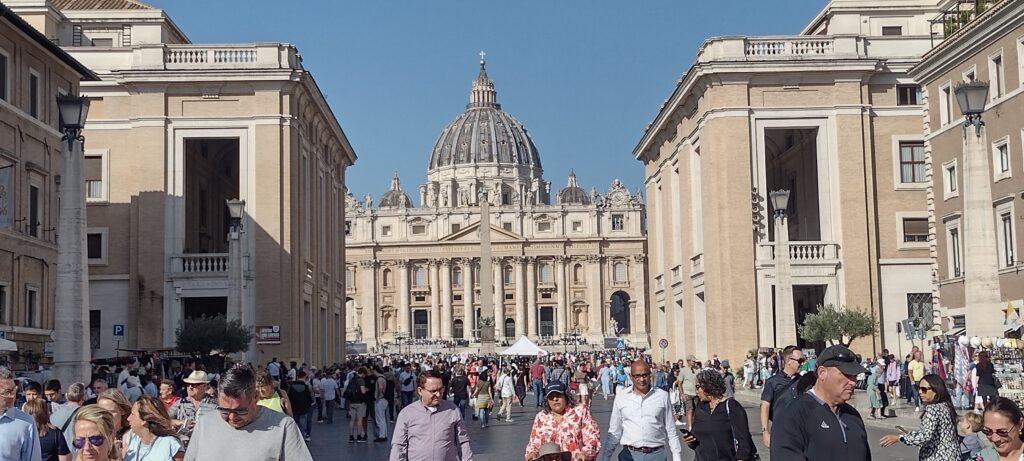
When Lori and I first confronted the issue of cover-up of clergy sex abuse by our then bishop and friend Carlos Sevilla, our first instinct was that I should resign from my position as Director of Evangelization and Deacon Formation for the Diocese of Yakima. We wrote about our decision to our family in Louisiana. My sister-in-law, Lise, whose husband, my brother, has represented hundreds of victims of clergy sex abuse as their attorney, wrote back with, “Don’t do it. That’s exactly what they want! They want you out of their way.”
We took her words to heart, prayed, and heard Jesus say to us, “Do you love the Church enough to stay in and work for change? You don’t have to do this. But somebody needs to bear the cross that working for change entails.”
It was clear to us that if we do not work for change then we must not only quit ministry but quit being Catholic. Otherwise, knowing what we know and not speaking up would make us complicit. That was true then, and it is true today. Over the past 21 years we have organized listening sessions to have survivors of sex abuse tell their stories; written the Pope’s ambassador to the US twice (never heard back from him); met with the Cardinal of Chicago, Francis George; organized days of prayer and fasting; and led workshops to inform people about the sex abuse crisis. I even wrote my doctoral thesis on training lay review boards to function as watchdogs over sex abuse cases and not just function as advisory boards.
During this time, I was banned from working at any Catholic church or institution in central and western Washington. I did CLM ministry in the homes of friends, gave retreats at other Christian churches, and traveled to other states where clergy friends and CLM sponsors would have me speak. Finally, in the summer of 2019, after Pope Francis published new rules stating that whistle-blowers ought to be protected in the Church, I filed a whistleblower complaint against the former bishop of Yakima, Carlos Sevilla, for his retaliation against me. The complaint was received, and the former bishop of Yakima was reprimanded for causing “harm and scandal” to the Church.
When, in late July, Tim Law, a friend and the founder of End Clergy Abuse (ECA), told us that he and survivors from around the world were going to Rome ahead of the Synod to walk a pilgrimage route, carrying a cross, to lobby the Vatican for stronger protocols to protect children and whistleblowers, we jumped at the chance to go. Tim, who is not a survivor of sex abuse but is a vigorous advocate for survivors, and eight others who are survivors began their walk on Sept 21. We joined them on Sept 23, three days into their trip. We walked with them, taking our turn carrying the cross for the final pilgrimage days, covering about 66 miles. OUCH! It was long, hard walking but beautiful sharing when we could keep up with the group’s pace.
We met several Italian “angels” who directed us along the right path. On our first day of walking we came to an area with a dozen downed trees blocking the path. An Italian “angel” appeared walking from the other direction and lifted the tree trunk just enough for several of us walkers to slip underneath.
On our second evening of walking, we came to the town where the main group was staying. Our accommodation was still another 45-minute walk to the outskirts of the town. As darkness fell, the hostess came riding her bicycle up the hill to meet us. She took our packs on her bike and assured us that we were almost there. On our third evening, we were searching in vain for our bed and breakfast. Stopping at a busy pizzeria to ask directions, we met a family, Luca, Sylvia, and their son Andreas. The parents spoke some English and listened to our plight. After a rapid family discussion in Italian, Sylvia said, “My husband knows this street where you are going. He is an electrician working at a home on this very street. He will drive you there after we eat our supper.” And he did! The providence of God!
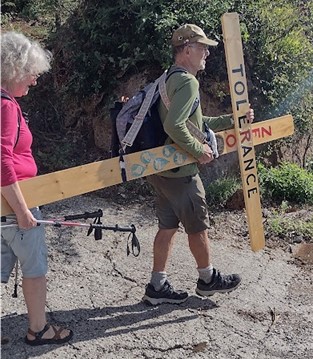
Our small group met a larger group of survivor lobbyists, folks from Jamaica, Canada, Peru, Mexico, Slovenia, Italy, Germany, Philippines, Costa Rica, Serbian, New Zealand, India, Congo, and Uganda. What courageous men and women, coming to Rome at their expense, demanding that Pope Francis do more to change Church law and practice to better protect minors and vulnerable adults from sexual exploitation.
There were press conferences (I was interviewed by Associated Press and Reuters, and Lori, though trying to stay in the background, got her picture in the Reuters newsfeed); protest rallies outside St. Peter’s; organizational meetings; letters presented to the papal commission on sex abuse; and planning for the next leg of the journey – taking this issue to the United Nations in Geneva. This part of the journey was for a select few.
As others went on to Geneva or returned to their homes, Lori and I stayed in Rome to participate in an ecumenical prayer service led by the Taize community for the upcoming Synod. Pope Francis participated in it as well as representatives from the major Christian denominations and Churches. In fact, a female Lutheran bishop who was on the podium with Pope Francis stayed at the convent where we also stayed. We had breakfast with her the morning following the service. The prayer service was attended by several thousand people including many, many young people from across Europe. It concluded with the veneration of the cross of San Damiano, a replica of the one from which Francis of Assisi heard the words, “Francis, go and rebuild my church for you see it is in ruins.”
Lori and I with Tim Law of Seattle and the End Clergy Abuse delegation are doing our part to continue the call given to St. Francis to “rebuild the church” that is in ruins due to the crimes and sins of clergy sex abuse and cover-up. We think we have had an impact. While we were in Rome, we read that the papal commission on sex abuse sent a statement to the delegates at the upcoming Synod insisting that the issues of sex abuse of minors and vulnerable adults be at the center of their deliberations. We are grateful to Tim Law for including us to be a part of this effort. Please keep Tim and the good work of ECA (End Clergy Abuse) in your prayers.
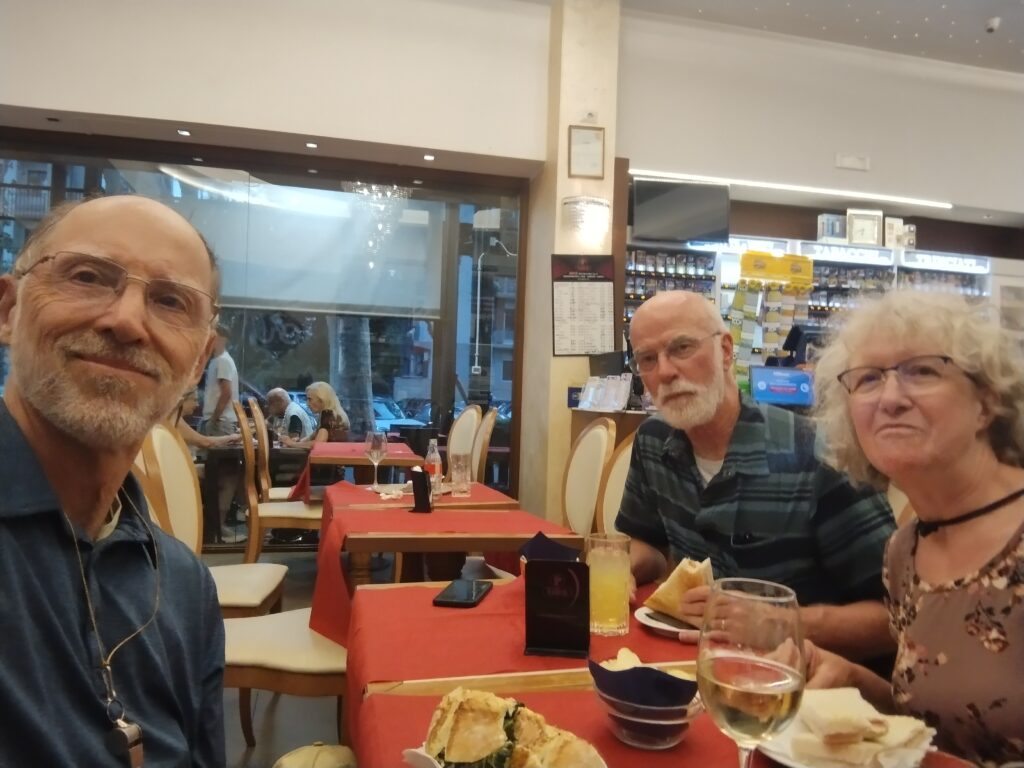
Pope Francis: Changing Catholic Culture but not Catholic Doctrine
By Robert Fontana
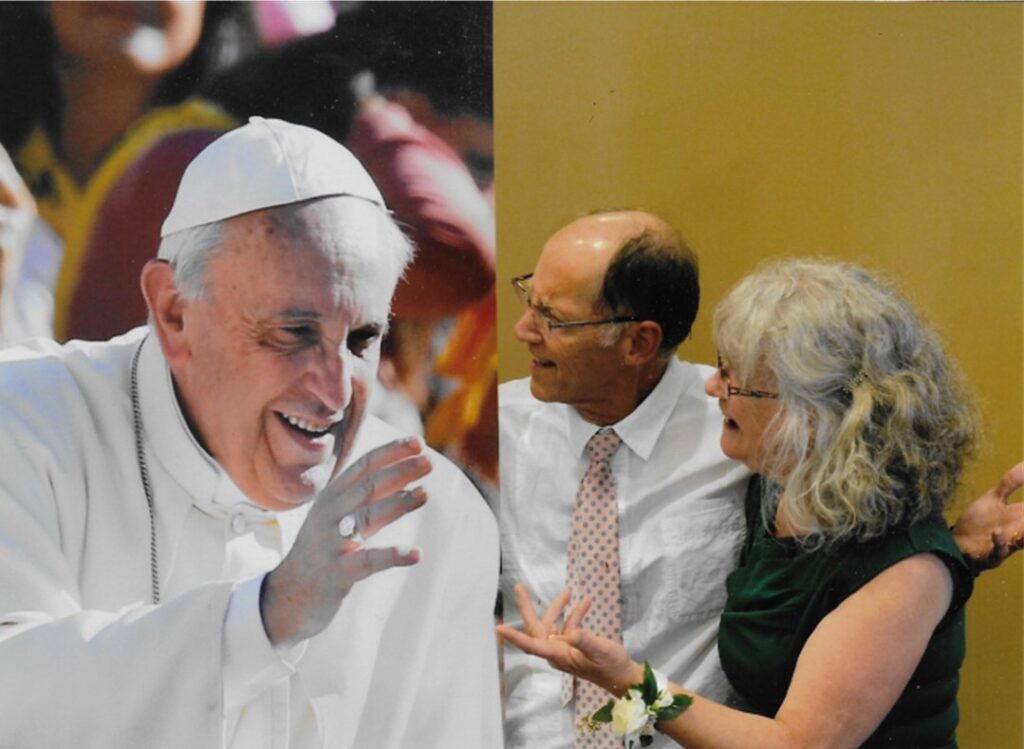
Pope Francis has a pretty good approval rating among Catholics in the United States. According to Pew Research, 83% of Catholics in the US have a favorable opinion of the Argentine Pope. However, there is a very vocal minority which includes high-ranking clergy who are very unhappy with the current pope and do not mind saying so. Commentators for EWTN, The Catholic Register and First Things and prominent prelates have called his papacy “a catastrophe,” “leaderless,” and “a betrayal.”
Advocates for greater protection of children, youth, and vulnerable adults and whistleblowers in the current crisis of clergy sex abuse and coverup are extremely disappointed in Pope Francis (Lori and I include ourselves in that camp). He says the right words but these often do not turn into effective action. A case in point is the very bizarre and sick story of Father Marko Ivan Rupnik, a celebrated Jesuit preacher and artist whose mosaics grace churches and basilicas around the world. Close to a dozen women, including Catholic sisters, have come forth accusing Rupnik of sexual, psychological, and spiritual abuse. The allegations were deemed credible by Jesuit investigators; yet Rupnik, who had been removed from ministry, was allowed to return. The public outcry was so great that just recently Pope Francis was pressured to reopen his case. (See: https://www.seattletimes.com/nation-world/pope-orders-vatican-to-reopen-case-of-priest-accused-of-adult-abuse-but-allowed-to-keep-ministering/)
In light of all this criticism, I think it is important to keep in mind that Pope Francis has not changed one Catholic doctrinal teaching or moral teaching. He is working to change Catholic culture, how we understand ourselves as a Catholic people and how we express this self-understanding in worship and mission. In doing this he is being faithful to the intent of the reforms of the Second Vatican Council which sought to transition from a Church that saw itself as a European monarchy (Council of Trent and Vatican I) to a Church that sees itself as the People of God from all the nations, sinful and holy, traveling through history. This People of God, clergy and lay, has a mission to be the mercy of God in the world as disciples of Jesus.
The following vignettes are examples of how I see Pope Francis changing Catholic culture without changing Catholic doctrine:
The new pope was introduced as “Francis,” a name no other pope has dared to take: Pope Francis said, “Francis is also the man of peace. That is how the name came into my heart: Francis of Assisi. For me, he is the man of poverty, the man of peace, the man who loves and protects creation; these days we do not have a very good relationship with creation, do we?” …Francis of Assisi “gives us this spirit of peace, the poor man who wanted a poor church,” the pope said. “How I would love a church that is poor and for the poor.” (https://www.ncronline.org/blogs/francis-chronicles/pope-francis-i-would-love-church-poor )
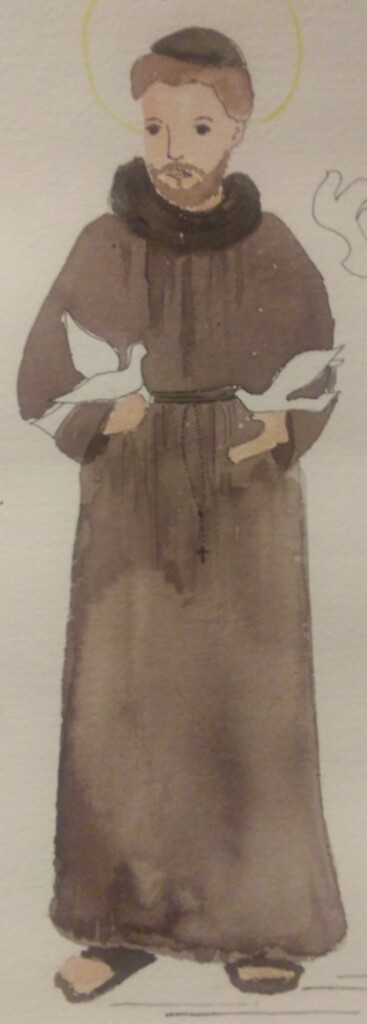
Pope Francis on the Sacraments: The Catholic Church is a “field hospital,” where the Eucharist is understood as medicine for the sick instead of a prize for the perfect…” (http://www.icatholic.org/article/the-church-as-a-field-hospital-6836071)
Remember when he said to priests… [be] shepherds living with “the smell of the sheep”, shepherds in the midst of their flock…” (https://www.catholicworldreport.com/2013/03/28/full-text-pope-francis-chrism-mass-homily/) There is that spirit of clericalism in the Church, that we feel: clerics feel superior; clerics distance themselves from the people. Clerics always say: ‘this should be done like this, like this, like this, and you – go away!’” It happens “when the cleric doesn’t have time to listen to those who are suffering, the poor, the sick, the imprisoned: the evil of clericalism is a…is a new edition of this ancient evil [of the religious ‘authorities’ lording it over others].” But “the victim is the same: the poor and humble people, who await the Lord.” ~ (https://aleteia.org/2018/08/23/5-of-the-many-times-pope-francis-has-railed-against-clericalism/)
Francis’ first trip as pope: Pope Francis has said Mass for migrants on Italy’s tiny island of Lampedusa, condemning the “global indifference” to their plight…Lampedusa, about 80 miles (120km) from Tunisia, is one of the nearest gateways to Europe for Africans fleeing poverty and conflict. (https://www.bbc.com/news/world-europe-23224010)
Francis changing the College of Cardinals Pope Francis created 21 new cardinals (Sept 2023) from across the world… created from 15 different countries… The pope also created cardinals representing Catholic communities in non-majority Christian countries: … Jerusalem; …Hong Kong; … Malaysia. In total, 16% of all cardinal-electors are now from Asia, compared with 9% before Francis’ pontificate…The pope has now created cardinals from 66 different countries…In contrast to the increase in cardinals from the global South and East, the percentage of cardinals from Europe has fallen from 53% in 2013 to 39% today…(https://ww.catholicnewsagency.com/ news/255528/pope-creates-21-new-cardinals-continues-expansion-of-college-s-geographic-diversity)
What he spoke about homosexuals: Italian journalist Andrea Tornielli asked the pope how he might act as a confessor to a gay person in light of his now famous remarks in a press conference in 2013, when he asked: “Who am I to judge?” “On that occasion I said this: If a person is gay and seeks out the Lord and is willing, who am I to judge that person?” the pope says. “I was paraphrasing by heart the Catechism of the Catholic Church where it says that these people should be treated with delicacy and not be marginalized.”
“…”I prefer that homosexuals come to confession, that they stay close to the Lord, and that we pray all together,” says Francis. “You can advise them to pray, show goodwill, show them the way, and accompany them along it.” (https://www.ncronline.org/francis-explains-who-am-i-judge)
Francis and a “synodal church:” In a certain sense, what the Lord asks of us is already contained in the word “synod.” Walking together – Laity, Pastors, the Bishop of Rome – is an easy concept to put into words, but not so easy to put into practice…A synodal church is a listening church, knowing that listening “is more than feeling.” It is a mutual listening in which everyone has something to learn. Faithful people, the College of Bishops, the Bishop of Rome: we are one in listening to others; and all are listening to the Holy Spirit, the “Spirit of truth” (Jn 14:17)… (https://www.thetablet.co.uk/texts-speeches-homilies/4/849/pope-francis-address-at-commemorative-ceremony-for-the-50th-anniversary-of-the-synod-of-bishops-17-october-2015)
(Post your comments. You are welcome to agree or disagree.)
Homespun Homily by Lori: Puzzle Wisdom for Marriage
“How do I love thee? Let me count the ways.”
So begins a famous poem, Sonnets from the Portuguese 43, by Elizabeth Barrett Browning. These lines came to mind as Robert and I completed a 1000-piece puzzle depicting the city of Seattle. 1000 pieces! There were many moments when we sighed and said to each other, “Look how many pieces we still have to do! This is hopeless. We’ll never get this done.” One thousand pieces – let me count them!

But after six weeks of working on the puzzle, we finally pushed in the last piece. At the end, it looked as if we were missing two pieces, but we found them, one under the table, and the last one hidden in the sofa cushions, as the sofa was pushed up against the table on which we had spread out those thousand pieces.
Why do I write about our completing a big puzzle? Because working a puzzle is good for marriage. Think about it. Putting a puzzle together requires many of the same skills as building a strong marriage: teamwork, patience, awareness, creativity, and checking in with each other: innumerable times I asked Robert, “What do you think this piece with a little red splotch and squiggly dark lines looks like?” Together, we also frequently consulted the picture guide that came with the puzzle – our puzzle roadmap, so to speak.
A successful marriage requires teamwork because marriage is a team effort. If our marriage is healthy, we will have many shared goals and use our gifts to help each other reach those goals. When Robert succeeds / wins, so do I. When Robert fits one or three or a dozen more pieces into the puzzle, it helps me to see where some of my puzzle pieces go. Our marriage has give and take, times when I support Robert, times when he picks up the slack for me. So I applaud each time he fits a puzzle piece in; he cheers me on when I finally discover where that piece with the red splotch goes.
Patience – now there’s a big one.
Countless times, I picked up a puzzle piece, sure that I knew where it went, only to set it back down again in the jumbled pile of loose pieces because it just didn’t quite fit there. Patience is essential in marriage. Why? Because nobody’s perfect. Life is entirely a learning experience from start to finish, and we are learning as we go. We shift life’s puzzle pieces this way and that until finally, alleluia, one settles perfectly into place. Ahhhh, what a good feeling that is. But if we give up too soon, we won’t discover where that darn piece goes.

Each puzzle piece is small and only a tiny part of the whole. Sometimes we have to step back to see the whole picture. Thus, awareness is invaluable. With this puzzle, we grouped pieces into “sky,” “buildings,” “boats,” and “water.” That helped. Looking at the whole scene, we had a better idea about where each piece might fit. At times in our marriage, we have to stop and take in a larger view. The day-to-day routine of work, family, activities, cooking, shopping – these are the building blocks of life, essential but not the whole picture. It is so helpful to take a breath and see the whole of our marriage.
For this, prayer is invaluable, our own personal prayer and prayer as a couple. Especially when the pieces of life aren’t fitting together very well, when the routine is too hectic, too boring, too exhausting – awareness, nurtured by prayer, reminds us that there is a greater reality guiding our relationship and giving meaning to our lives.
I readily admit that between Robert and me, he is the creative one. And putting a puzzle together does require some creativity. He is very good at looking at the “squiggly lines” on a one-inch puzzle piece and zeroing in on the area of the puzzle picture where it will fit. Interestingly, only recently did Robert decide he enjoyed puzzles. I think the isolation of the Covid quarantine nudged him to try a puzzle; and he ended up being quite adept at it and actually appreciating the challenge. Working a puzzle together has shown us that each of us brings gifts “to the table” to help accomplish the task. While I notice the tiny features of a color, shape or squiggle, Robert can see the overall design. In this case, my attention to detail complements Robert’s creativity.
Finally, back to the aspect of checking in: it is vital to a relationship and requires clear and kind communication. We asked each other for advice. We shared ideas and observations. I even let Robert put in the final puzzle piece.
But perhaps the greatest gifts for us as we worked the puzzle were how it fostered closeness, and it was fun! For some time each day, over weeks, we sat side-by-side at the puzzle table. We rubbed shoulders (literally) and reached around and across each other. We chatted and laughed as we worked toward a common goal. It was a sweet time together, time that nurtured our marriage.
Try a puzzle together!

But if puzzles just aren’t your thing, find an activity to do with your spouse that builds your loving relationship – riding bikes; walking in the park or hiking in the mountains; fishing or crosswords or refinishing furniture or cooking.
And, of course, remember to pray together. Couple prayer is the foundation of your relationship in Christ. These activities foster “togetherness” and fun, drawing out your gifts and strengthening your marriage.
Homespun Homily: Being a power for good with my limitations and diminishments
By Lori Fontana
We’re all on the road “home” to God. We all want to get to heaven…though not today, Lord. But we’re not just in a holding pattern here. What are we doing “while we wait” for entrance into our eternal home? The chorus from a 60’s church song contains my two main thoughts:
Love one another; love one another, as I have loved you.
Care for each other; care for each other, as I have cared for you.
And bear one another’s burdens, and share each other’s joys.
Love one another; love one another, and bring each other home.
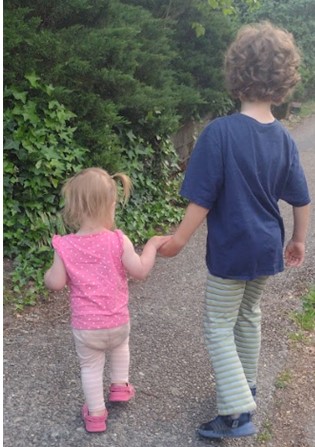
First, I recognize and embrace that I am a beloved child of God; and in this love, God gives me gifts and talents. None of us has ALL the gifts, nor are our gifts perfect; but each gift is valuable. It’s important that I not measure my worth according to a false hierarchy of gifts. When St Paul talks about the parts of the body, each part has a different function, but all parts are valued and needed. 1 Corinthians 12: 14 – 22
Secondly, who I am and the gifts I have – these are meant for me and for others, for the community. The Christian life is not just God and me.
The Christian life is a shared life. All love, including God’s love, is made real in the giving and the receiving. In the famous Rublev Trinity icon, the figures representing God the Father, God the Son – Jesus, and God the Holy Spirit are arranged in a circle, acknowledging each other. They are depicted in relationship with each other!
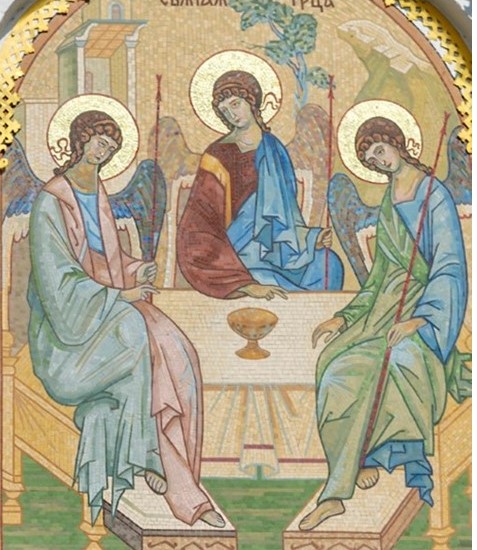
Each of us is created and loved by God. But from the moment we are born, we are diminishing, whether through illness or injury, external calamities such as job loss or natural disasters, or simply by aging. Where do we draw purpose and hope in light of diminishment? St. Paul offers a hopeful message: that even while we may appear to be “wasting away,” we are growing closer to our eternal glory in God. But we’re not called to retreat to a private corner and waste away. In the time we are given here, we are called to use our gifts to build up the reign of God, to be a power for good in the world. 2 Corinthians 4:7 – 10, 16 – 18
Our Catholic tradition offers the saints, people who, even though suffering limitations, were a power for good. Plus, there are saintly people all around us – “saints-in-the-making.” Here are a few examples.
Sr. Thea Bowman was an African American woman, born in rural Mississippi in the 1930’s. Hers was a loving family, but being a woman and an African American, in the rural south – these were challenges. Taught by Franciscan sisters, she was inspired to join their convent in Wisconsin – a group of all white women, some of whom had never seen a black person. Sr. Thea’s strong confidence in God’s love and purpose for her life carried her forward. She was a natural teacher, using all the gifts of her black Christian culture – song, dance, a deep faith honed through persecution – to guide her students. Until the end of her 50-some years of life, she remained hope-filled and faith-filled until finally succumbing to a painful cancer. In the midst of her illness, Sr. Thea famously said: “Part of my approach to my illness has been to say I want to choose life. I want to keep going. I want to live fully until I die.” Sr. Thea – a power for good!
My mom just turned 93 which brings with it the diminishment of physical and mental abilities and energy. In Mount St Vincent assisted living, she is welcoming and kind to everyone, a “missionary” for the love of Jesus. Though hard of hearing most of her life, she is otherwise quite healthy and gets up each morning with purpose. Even though she is shy, she reaches out to the people around her because she knows the challenges people face when moving into assisted living, and she wants to help. My mom – a power for good!
Joey K – Our friend Joey is a young adult who has Downs Syndrome. Some might say Joey has a difficult challenge. However, Joey doesn’t see it that way. He lives a full, successful life, energized by his desire to help – in his family, community, church, and workplace. From a very young age, he visited the elderly with his family. Now, Joey works at the retirement home. He does his job with great love and care, and he is a friend to all! Outside of work, Joey is a lead usher at Our Lady of Guadalupe Parish, and he always serves at funeral Masses. He is a member of the board of directors for the local Downs Syndrome Community organization. Joey is positive, outgoing, generous in sharing his gifts, and confident that he is loved by God. In that confidence, he loves others. He recognizes others’ gifts and draws them out. Joey – a power for good!
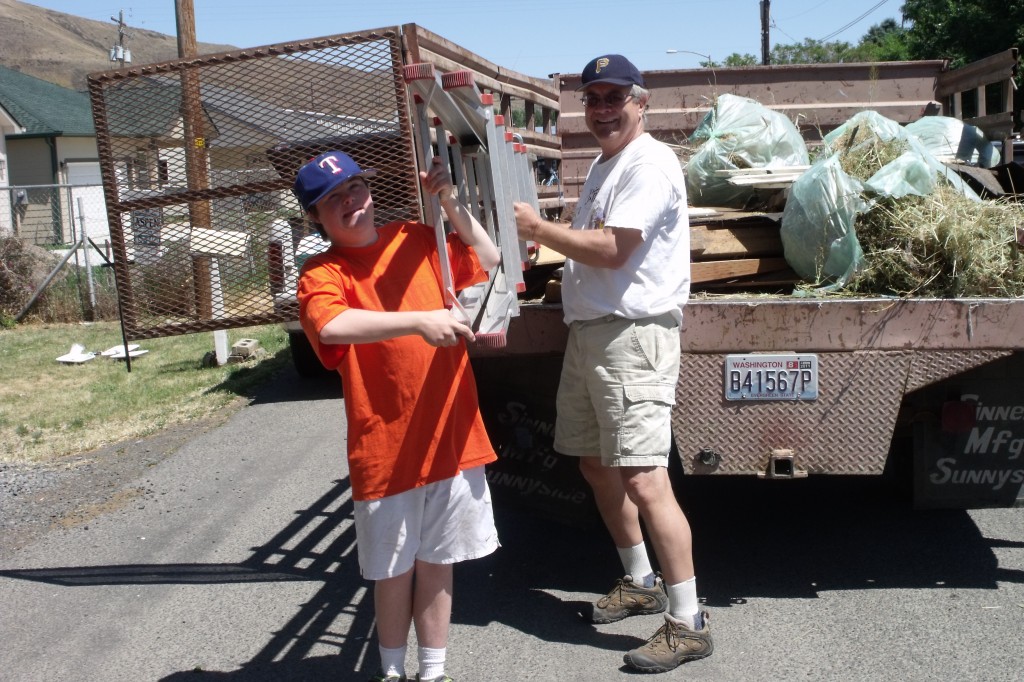
Each of you, I’m sure, knows many folks who, though dealing with their own challenges, use their gifts to help others. Each is a power for God’s goodness in the world. Every one of us is called to be a power for good. Even while, as St Paul says, we are “wasting away” in this life, we can be the hands and feet, heart and voice of Jesus in our world, as our own circumstances allow. We can be a power for good within the providence of our everyday life. What we do and how we do it will look different for each person; but we all can do something!
Mother Teresa encourages us with, “Not all of us can do great things, but we can do small things with great love.” And as Erma Bombeck, an author, humorist and devout Catholic, said:
“When I stand before God at the end of my life, I would hope that I would not have a single bit of talent left, and could say, ‘I used everything you gave me.’”
That’s being a power for good!
A Simple Lenten Devotion: Prayer before the Cross of Christ
This devotion is a family and/or community prayer often prayed at noon (or when it is convenient) on Fridays during ordinary time, every day during Lent and on any day when life is difficult.
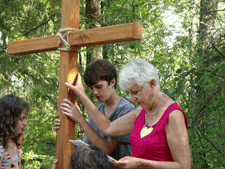
L For God so loved the world that he gave his only son, not to condemn the world but to save it. (John 3:16)
All Christ suffered for [us] that [we] should follow in his footsteps. (1 Peter 2:21)
L Though he was in the form of God, [Jesus] did not regard equality with God something to be grasped. Rather, he humbled himself …becoming obedient to death…death on a cross. (Philippians 2:6-8)
All Christ suffered for [us] that [we] should follow in his footsteps. (1 Peter 2:21)
L Jesus said, “Whoever wishes to come after me must deny himself, take up his cross and follow me. For whoever wishes to save his life will lose it, but whoever loses his life for my sake will find it.” (Matthew 16:24-26)
All Christ suffered for [us] that [we] should follow in his footsteps. (1 Peter 2:21)
L Let us pray.
All Father, I abandon myself into your hands; do with me what you will. Whatever you may do, I thank you: I am ready for all, I accept all. Let only your will be done in me, and in all your creatures – I wish no more than this, O Lord. Amen. (Prayer of Abandonment, Charles de Foucauld)
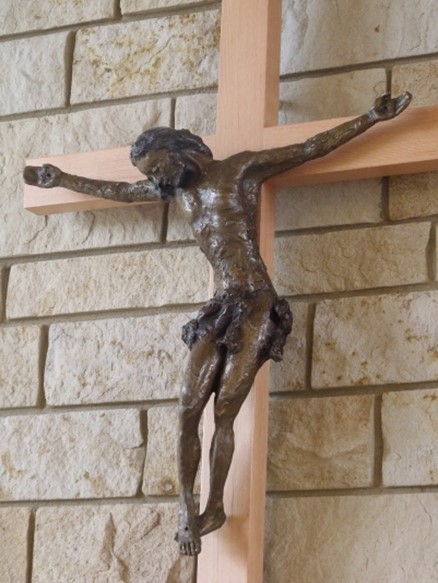
AGH! HELP! I HAVE A WOODEN BEAM STUCK IN MY EYE AND…
By Robert Fontana
Lent is here and “Spring is in the air.”
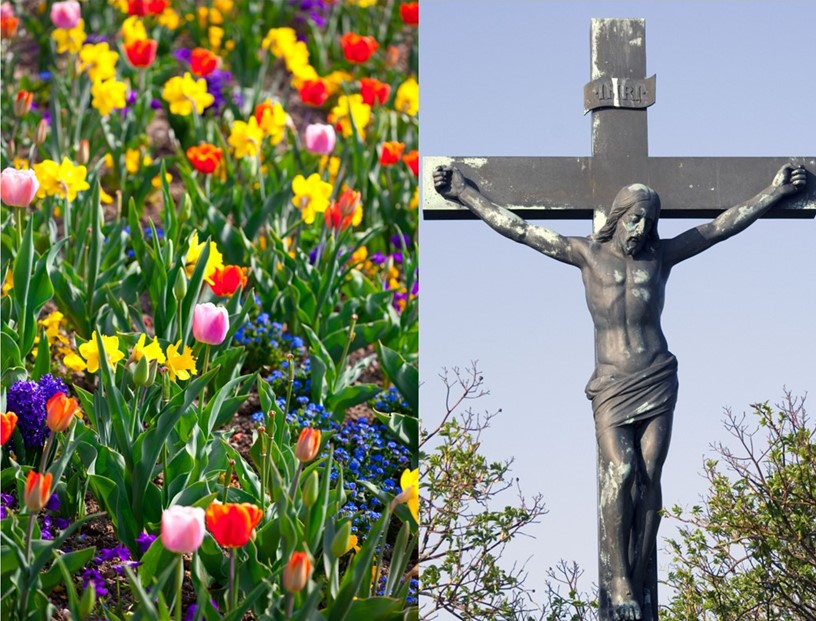
Ahhhh, what a great time of the year. Fasting from meat on Fridays and going to fish fries on Friday nights; attending Stations of the Cross on Mondays in March and rushing home just in time for watching the latest game in March Madness; and coping with the last days of darkness, rain, and winter with time for a walk through the cherry tree blossoms at University of Washington. Oh, of course, we pause from the solemnity of Lent on St. Patrick’s Day for some good Irish music, Irish beer, and Irish stew (or corned beef and cabbage if that’s your preference).
Lent is here alongside the rest of life’s happenings. Lent can easily become one of many Spring rituals that lead us to that wonderful Easter Day where we co-mingle the celebration of the resurrection of Jesus with the resurrection of the earth: Easter vigil and hunt for Easter eggs; baptisms of new members of the church and decorating the home with tulips and daffodils; Good Friday fasting and Easter Sunday feasting, with lots of chocolate.
What keeps Lent from simply becoming part of the cultural decorations of Winter as it becomes Spring? Lent has real meaning, of course, only when we use this season as a challenge to conform our lives to the life and teachings of Jesus and the Holy Spirit. This is complex. Jesus is both compassionate towards us in our weaknesses and demanding towards us as his disciples.
Jesus meets each of us exactly where we are in the spiritual life, and invites us to grow and mature, to gain a greater interior freedom to love God and neighbor. Certain aspects of Jesus’ teachings and actions will confront one person, while another person, reading the very same verse, may be unmoved.

That brings me to the Biblical text that confronts me this Lent:
Why do you notice the splinter in your brother’s eye, but do not perceive the wooden beam in your own eye? How can you say to your brother, ‘Let me remove that splinter from your eye,’ while the wooden beam is in your eye? You hypocrite, remove the wooden beam from your eye first; then you will see clearly to remove the splinter from your brother’s eye. (Matthew 7:3-5)
I don’t know about you, but the older I get, the bigger that beam seems to be! In fact, it’s not one beam, it’s several beams tied tightly together.
As I have learned over the years, an indication that I have a “beam” or many of them stuck in my eyes and need to do some self-reflection on why they are there and how to remove them, is how I instinctively react to a certain situation, news report, comment from a friend or stranger, etc. My gut reactions that are defensive, that insist on an immediate response, explanation or even retaliation, are clear evidence that the major problem here is in me and not the other person or event.
Learning to pay attention to myself and my reactions to life to identify how I want to change or mature has been a long and slow process. I was introduced to this method in self-awareness while training to be a chaplain at Fircrest, a school for the severely mentally handicapped in Seattle. I was assigned to work with residents who had the cognitive ability of a small child and could not verbalize their needs.
What was my reaction to working with these folks who seemed to be trapped in big bodies with little ability for self-care? FEAR! I did not know how to be me with them. I was worried about doing the wrong thing and afraid of dealing with their tantrums or other forms of acting out.
I brought these issues to my supervisor and small group, initially saying that I was probably in the wrong place. I did not belong here. “No,” said my wise teacher, “you are in the right place because these people are going to teach you to let go of your fears, let go of your ego that wants to accomplish something, and let go of your timeframe and slow down. You are not here as much to learn about working with this population of people but so these beautiful people can teach you to learn about yourself. Being here and learning about your fears and anxieties will teach you how to let go of these so that you can be with these people as they need you to be with them.”
That training lasted for four months in the Summer of 1990. I have been trying to practice the lessons my differently abled friends taught me ever since.
Lent challenges me, not so much to look at my sins and say, “Mea culpa,” although there is that aspect of Lent. It has me asking Jesus,
“What’s the beam in my eye that needs to be looked at and removed in this situation, in this relationship?”
At the end of each day, I try to do what the Jesuits describe as an examen of conscience. I review my day and try to name moments – encounters or situations – that evoked an emotional response. What happened? What were my emotions? Where did they come from? What biases, prejudices, sinful inclinations and/or painful memories do they tap into? What is the Spirit telling me through these moments? How am I being invited to mature, to grow?
Of course, the day may have also presented positive moments and emotions. I examine these in the same way.
It may be that I need to speak to someone about something he or she did that I found hurtful or that I didn’t understand. But before I do so, I want to reflect and call on God’s grace to take the “beam” out of my eye before I take the “speck” out of his/hers.
I DON’T LIKE JESUS
By Robert Fontana
Jesus lives in my neighborhood. I do not mean to shock you with this fact, but I don’t like him. When I see Neighbor Jesus coming towards me or find myself walking towards him, I want to avoid any interaction. Neighbor Jesus is nothing like the Bible Jesus I see depicted in movies, hear about in sermons and homilies, or even imagine in my own mind. Bible Jesus is awesome! He is a great storyteller, welcomes children, loves animals and nature, challenges hypocritical religious leaders, and comforts the sick and the sorrowful.
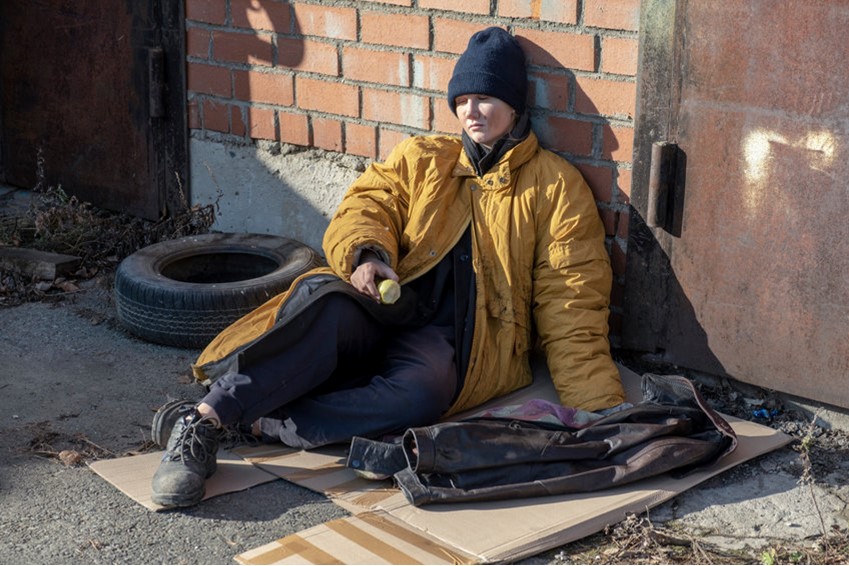
I like Bible Jesus. But Neighbor Jesus, that’s another story.
Neighbor Jesus lives in the green space near our home that is about one-half mile long and maybe 100 yards wide. The green space begins at Cowen Park which has a large open meadow and playground. The green space continues east forming a deep ravine with a flowing stream and lush trees and ferns on either side. It concludes at Ravenna Park with a ballfield and playground which give the green space its popular name, Ravenna Ravine.
At a random point anywhere between the two parks, Neighbor Jesus will find a spot to call home and settle in. Sometimes this means he brings in a tent along with a collection of items I assume are stolen from people’s yards and nearby stores. These items get strewn around his tent along with milk cartons, food wrappings, plastic bags, and other garbage. And, yes, when Neighbor Jesus leaves one spot to move to another, he leaves his former spot a mess for someone else to clean up.

Neighbor Jesus is nice enough, though I have heard some angry outbursts from him on occasion. We do exchange pleasantries when we cross paths. Lori and I have “friendship bags” prepared for people whom we encounter who do not have homes. These bags contain soft food items, socks, sweet treats, and a handout with information about how to access nearby shelters. We’ve given Neighbor Jesus a number of these, plus I often bring him coffee and occasionally an egg sandwich. He is grateful for these kindnesses.
I confess I don’t like continuing to give him these friendship bags because I do not want him to stay in the area. I certainly do not want him to know where I live and have him come knock on my door asking for help. And I don’t want to be picking up all the “trash” from the Friendship Bag that I gave him only a few days ago.
I walk through the Ravenna Ravine 3-4 times a week for my prayer time. I walk through the beautiful and diverse trees to spend time with Bible Jesus whom I like…and I do not want to encounter Neighbor Jesus. I do not like finding him sprawled out under a tree or hanging out on a bench asking me for a “cuppa coffee.” He ruins my time with Bible Jesus! He’s such an inconvenience!
Just today we had such an encounter. I was polite enough as I spoke to Neighbor Jesus who was just waking up, huddled beneath a tarp, obviously freezing cold in the 19-degree weather overnight. Yes, he asked me for coffee, and I said, “No, sorry, I don’t have any.” Which was true; I wasn’t carrying any coffee with me. But what I was really saying was, “Don’t interrupt my time with Bible Jesus! I only have so much time, and I don’t want to use it up on you, Neighbor Jesus.”
Predictably, as I walked away and turned my attention to Bible Jesus, I felt uncomfortable. I could hear Bible Jesus reminding me of a key passage from Scripture, “When I was hungry…sick… imprisoned…naked…you comforted me.” And then I heard a voice in my head/heart say, “There is little difference between Bible Jesus and Neighbor Jesus. Neighbor Jesus is what Bible Jesus looks like crucified, crucified by who knows what. Childhood trauma? Severe addiction? Terrible decisions? All of the above? Perhaps he has a criminal record? Perhaps he has burned all his family relationships? What is yours to do now?”
I walked back to Neighbor Jesus whose birth name is Jay and asked if he still wanted that coffee. “Yeah,” he replied, sitting up. “And you got one of them bags with stuff for me?”

“Wait here,” I said. And I walked back home to get hot coffee, an egg sandwich, and yet another Friendship Bag for my Neighbor Jesus.
NEW YEAR’S RESOLUTIONS THAT WILL CHANGE THE WORLD…ONE PERSON AT A TIME
By Robert Fontana

Every human being is a child of God, endowed with gifts to enable him or her to be a power for good in the world. At this time in history of great polarization, tribalism, and war, it is essential that we resolve to be the change in the world that will truly contribute to the common good. Here are a few suggestions:
1. Pray to the Holy Spirit every day for the grace to be alert to how you can be a power for good within the relationships, commitments ,and circumstances of your life, especially in the home and at work.
2. Cultivate silence in your day, 10-20 minutes of silence, to slowly learn to grow in self-awareness and to learn to listen with the ears of the heart.
3. Pray with and befriend a faith community different from your own. If you are an active Christian, consider meeting with a local Muslim, Hindu, or Jewish community. Be curious about what they believe and how this impacts how they live. As appropriate, share your own story of faith, and look for what you hold in common.

4. Make a commitment to be in nature 2-3 times (at least!) a month. Psychotherapists are increasingly urging clients to spend time in nature as a method for calming one’s anxieties and as an anecdote to depression. Nature has an enormous healing capacity for those open to it. This means time in nature (it could be your garden) to listen, feel the breezes and wind, and simply gaze at its beauty, rather than always doing the more active pursuits of hiking, skiing, and biking. Most people are “nature starved.” For Catholics, nature is a sacrament capable of revealing the hidden presence of God.
5. Strengthen the bonds with the primary people in your life. If you are married, work on your marriage. If you have children, have family meals throughout the week, and family time without electronics. Single or married, be intentional in spending time with those people who help you be your best self.

6. Lastly, during this election year, commit yourself to protecting democracy at home and abroad. This is not a partisan resolution. Whatever your politics, protecting democracy is essential for protecting religious freedom, freedom of the press, freedom to gather, and other freedoms outlined in the U. S. Constitution. To quote Winston Churchill: ‘Many forms of Government have been tried, and will be tried in this world of sin and woe. No one pretends that democracy is perfect or all-wise. Indeed it has been said that democracy is the worst form of Government except for all those other forms that have been tried from time to time.…’
The birth of Jesus for troubled times
By Kathleen Kichline
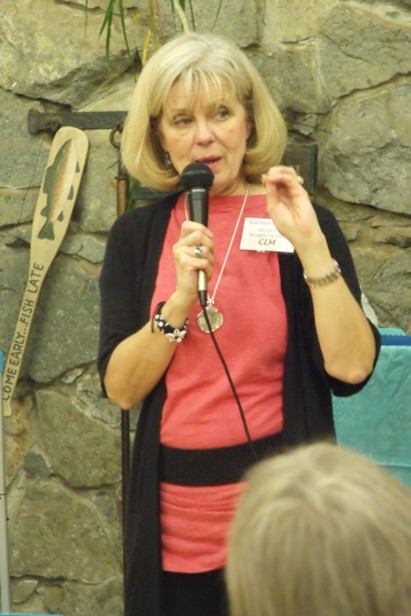
There are times in our lives and times in our world when Matthew’s telling is a more accurate rendering, when the circumstances Matthew describes resonate with our own experience. Matthew speaks of troubling dreams, Herod killing the children of Nazareth, and a family fleeing under the cover of darkness to seek refuge in a foreign land. This, too, is Christmas. It is “Christmas, The Rest of the Story.”
If we only focus on the familiar, beloved Lukan version, we can limit the manger to a gathering place for the wide-eyed child, for those singing “Joy to the World,” and for families reunited for the holidays. But Christmas is also for the one who just buried a loved one, for the parent who cannot afford food for their child—let alone a gift—for the sick, the confused, the addicted, and for those with nowhere to sleep that night. These may not recognize themselves in the perfection of the Lukan story, one we have painted over in the warm glow of Norman Rockwell scenes. The stark simplicity of the original telling has been spiced with gingerbread and peppermint, transferred to a snowy clime, plumped with festivities and food, and turned into a scene that resembles a Hallmark greeting card, a scene that painfully excludes those whose lives look nothing like that, whose lives are less than perfect, those, in fact, who are most in need.
What if the story were told instead of a father awakened by a nightmare to sit bolt upright in bed, cold with fear. Only it was no nightmare; it was warning, and it was real. He knew because the angel had warned him before and could be trusted. Evil, dangerous men were coming in search of his wife and his child, intent on murdering them in their beds. He only had time to awaken them, gather a few things, and flee into the night.
Guided by stars and perhaps more dreams, he leaned into the desert winds, looking over his shoulder, and shielding his family. They left all that they knew, uncertain of when or if they would return, and they descended into the foreign land of an ancient enemy, there to seek refuge and hide among those they did not know. And amid all that chaos, the story reaches its climax…that in the middle of all the chaos, God was with them.

Maybe if you have had cold sweats, have feared for your life or your child’s, have owned nothing more than what you could pack on your back, maybe if you have heard your neighbors’ screams in the night, have left behind family and friends, are alone, hungry and tired and aching, maybe you would hear this story and think, “Yes, that man is me. That story is like mine.” And when you heard the punchline, “God was with them,” you would be startled and look around to see if God could also be with you.
That might become your Christmas story, at least for this year. Once upon a time, you would say, when my life was in peril and at its worst, God was with me. That is what Emmanuel means, God-with-us. And that Christmas story would become your own.
_________________________________________________________________________________________
This article comes from Kathleen’s book, WHY THESE WOMEN? TAMAR, RAHAB, RUTH, AND BATHSHEBA (pp. 139-140); used with her permission. You can buy it on Amazon at https://www.amazon.com/Why-These-Women-Stories-Before/dp/B09R2WRK8W. Better yet, go to your local book store and ask them to order it for you!
